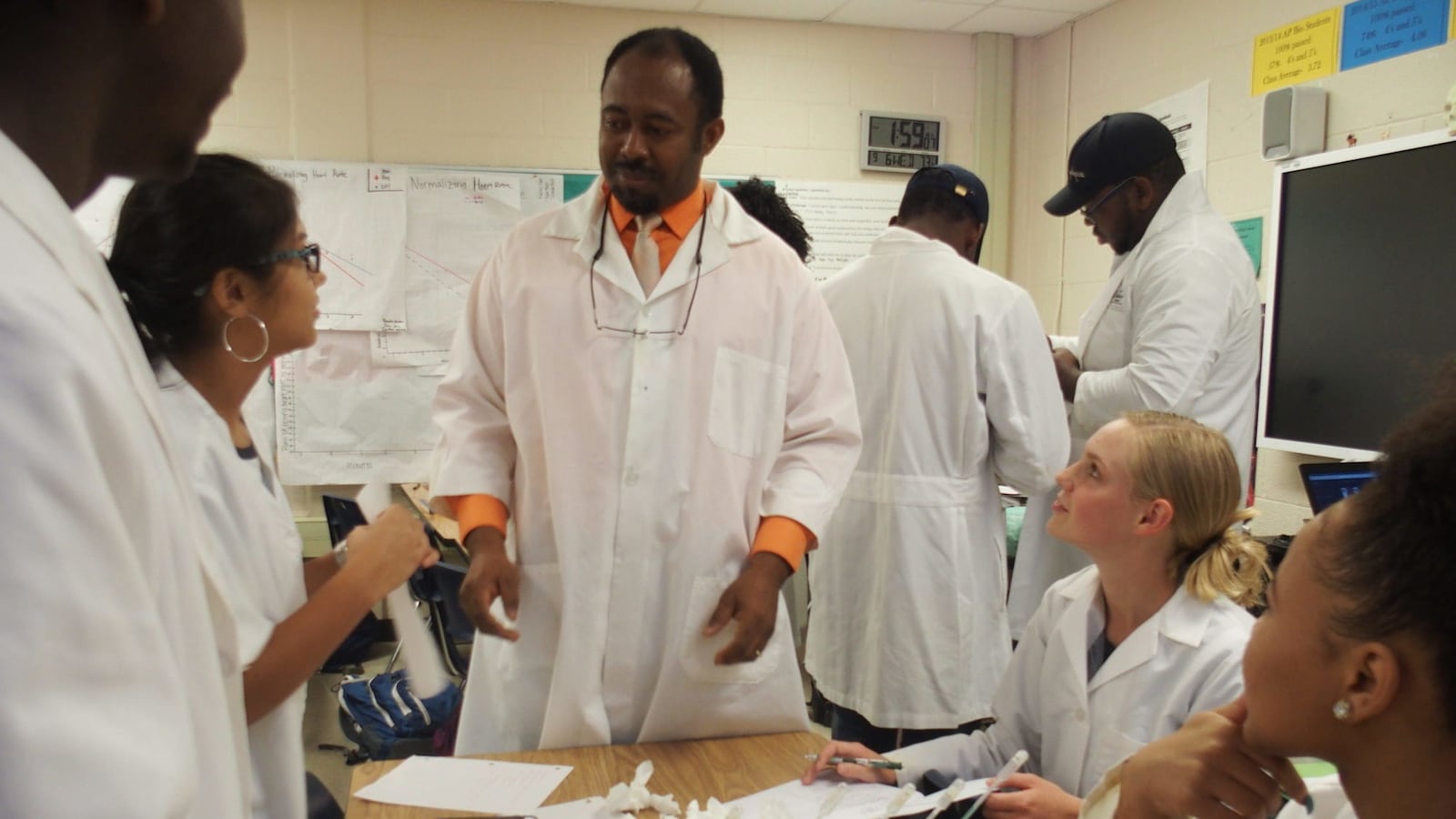Mariam Manuel was sitting in calculus class at the University of Houston over a decade ago when a professor mentioned a new program allowing math and science majors could also earn a teaching certification.
Manuel knew she wanted to teach, but she didn’t know how she’d get licensed. “It truly was one of those moments that completely changed the trajectory of my life because prior to that I was not able to find something that made that path so clear,” she said. “I enrolled in classes that weekend.”
Now, new peer-reviewed research on the program, known as UTeach, shows that its teachers performed substantially better in the classroom than other teachers in Texas, as measured by student test scores.
That’s just one limited gauge of a teacher’s performance. But it’s encouraging evidence about a rapidly growing program that now operates in 22 states, suggesting that there are ways to better recruit science and math teachers and prepare them to reach students.
The UTeach program started at the University of Texas at Austin in 1997. The idea was to entice math, science, and engineering students to enter teaching with a streamlined program that allowed them to earn both a degree in their subject and a teaching certificate in four years.
Now, the UTeach program partners with 45 universities; by 2022, its leaders predict it will have graduated nearly 8,000 teachers.
Notably, the program doesn’t have tough entry requirements — students at a given university can simply enroll. But they are quickly exposed to the challenges of teaching, perhaps as way to weed out those for whom it’s not a good fit.
“Students start to write lesson plans and teach small units to elementary school children the very first semester in the program,” its website notes.
Many students don’t continue. The study notes that, depending on the year, between 21 and 38 percent of students who enrolled in the initial teaching course completed the program at the original Austin site.
For those who do go on, the program also requires classes in pedagogy and additional student teaching with master teachers. (Keep in mind that the particulars of the program may vary from campus to campus.)
To gauge the effectiveness of the program, the researchers looked at graduates from the program’s original campus and six other participating schools in Texas, and then looked at their impact on student test scores in high school math (largely algebra), high school science (largely biology), and middle school math from 2010 to 2016.
(These “value-added” measures are highly controversial when used in individual teacher evaluations, but they are more widely accepted for low-stakes research purposes.)
The study finds that teachers trained through UTeach were substantially more effective at raising test scores than other Texas teachers with similar students. The difference between UTeach graduates and non-UTeach teachers was actually larger than the gap between new teachers and teachers with a decade of experience.
That’s striking because other research has shown that teachers improve for their first five years on the job, and possibly beyond that. It’s also surprising because other research on teacher preparation has shown that it’s difficult to tell with any certainty which programs produce more effective teachers.
Looking not statewide but within UTeach teachers’ own schools, UTeach graduates still looked good, but somewhat less so: they were similarly or slightly more effective than their colleagues.
The positive findings highlight an important point about teacher training: It may be possible to move more quickly through a traditional four-year curriculum. “Our results suggest that condensing these courses has not resulted in detrimental performance once teachers enter the classroom,” the study’s authors write.
The study can’t sort out what specifically about the program makes it effective, and it’s unclear if the program can maintain its effectiveness as it grows outside Texas.
But the paper shows that the number of math and science teachers graduating from a given university increased after UTeach was put in place, suggesting that the shorter program drew in people who would not otherwise have become teachers.
That’s consistent with other research and the experience of Manuel, who after several years of teaching in public schools now trains teachers through the UTeach program at the University of Houston.
“We go and we speak to students and we tell them about this option that’s available to them,” she said. “Once they [try student teaching], so many of them for the first time realize that they have the bug.”


